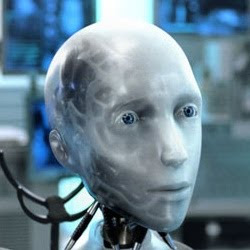“There’s really no acceptable reason to skip this one. It’s very sweet, and as a guy who doesn’t fall in love with characters all that often, this book was a challenge. Because I loved them all. The worst thing about this book is that it sat so long on the To Read list. But I make lots of bad decisions, so don’t take my slow turn to this book to mean anything. One time I melted cheddar cheese on a carrot to see how it would go as a snack. Bad decisions are really my way.
When my dad used to drive us to the water park, he could never remember which exit from the interstate to use. So he’d pick one, then end up in these bizarre neighborhoods. You’d think that it’d be easy to spot a giant water park from a couple blocks away. You’d see a huge flatlining slide of terror or something poking over the roofs. But I guess terror isn’t as tall as you’d think, and we spent a good chunk of time driving past brick houses before getting to the park.
He always said he was “spiraling in.” Driving circles, but getting closer all the time. I don’t know if that was true, but it seemed like once he accepted that he’d never be able to drive straight somewhere, once he made peace with working towards the center from the outside, it all worked out. At that point, you’re always making SOME progress, which is easier to live with.
My point here is that instead of going straight to a great book, I’d like to think I spiral in. Get there eventually. But take heed from my spiraling and use my mistakes to take the straight line to this one.
One thing a lot of people seem to get hung up on is that the book is weird. Yes, there are elements of the book that are not normal.
And this brings me to Going Full Magic.
I’m assuming here that we all remember the “Going Full Retard” speech from the movie Tropic Thunder. In case we don’t, or in case you didn’t see that movie, here’s the premise: In order to win an Oscar, you have to play a SEMI-retarded adult. Not full-blown. Forrest Gump, Rain Man. So on.
When it comes to magic and what people will buy in books, the rule is reversed. You must go FULL magic, otherwise people find it weird and creepy.
Let’s talk Harry Potter for a second.
For the most part, we accept what happens in Harry Potter because it’s a world of magic. It has rules too. You have to do these certain rituals, possess certain objects, and only then can you make magic. So while the things you can do are magical, they are defined by pretty un-magical guidelines. Which is strange to me. Why can’t you make another Sorcerer’s Stone? Why do we accept that the best way to deal with this object is to get the one instead of building another one from the same magic? Or why couldn’t someone create the Anti-Sorcerer’s Stone Spell, AKA Marlboro reds? How’s there not one fucking machine gun in this thing?
I’m not really into critiquing Harry Potter at the moment here. The goal here is to explain that when a book or a world is created with Full Magic, we not only accept the magic completely but also the rules governing that world.
Some books that also go Full Magic would include things like Lord of the Rings, Narnia books, and basically anything with a dragon involved in any way other than being tattoo denoting a scary man’s gang affiliation.
So what about books that go Half Magic?
I would go with a lot of Philip K. Dick’s books as working this way. He’s put into sci-fi, but a book like Counter-Clock World where people begin aging backwards really has more to do with magic than science. The science comes in as the way to deal with the magic.
Counter-Clock World is kind of creepy. People spend a lot of time in graveyards, and the plot revolves around crews who dig up the dead just before they revive so that people aren’t waking up buried underground in coffins.
Haunted houses are very in the Half Magic world. They’re familiar, but when the house itself turns against you, it’s all the creepier because what was so trusted is not at all what you thought.
Toy Story is a great middleground when it comes to what I’m talking about and turning it into a visual. You’ll notice that the toys in Toy Story look a lot like the toys they represent. The people…well, they kind of look like the toys too. Andy’s face looks a lot more like Buzz Lightyear’s than an actual, real life kid’s face. So while thinking about your toys walking around would be creepy as fuck in real life (I mean, imagine coming home and seeing a Peter Venkman Ghostbusters figure walking around the kitchen, muttering to himself. Or an Egon Spangler Ghostbusters figure assembling his own tiny science lab. I only have Ghostbuster toys, so my imagination only goes so far here). The way Pixar makes it less creepy is by making the world look like more like the world of toys than ours.
So let’s talk Uncanny Valley.
The Uncanny Valley comes from a theory that I’ll dumb down this way: stuff that’s a lot like human but just a little off is creepy.
A Lego man is not creepy. Because it looks nothing like us. Johnny 5 from Short Circuit is creepier, but not high on the creep meter. He has some human-like features, but they function in place of human features and aren’t meant to fool someone into thinking he’s human. iRobot movie robots? That’s some creepy shit.
And let me be clear.
The robots from Terminator are scary. Maybe scariER than the iRobot robots. I mean, it’s a chrome skull with red eyes. That’s about as bad as it gets in terms of something chasing you down an alley with a laser.

But I think the iRobot dudes are still creepier.

If this uncanny valley thing is still confusing, watch this video: http://www.youtube.com/watch?v=CNdAIPoh8a4
So the Uncanny Valley theory will tell us that something close to human and just a bit imperfect is creepy. Creepier than something way off, creepier than something indistinguishable.
Which is why, ladies and gentlemen, we find Full Magic fine (it’s not very parallel to our world) and Half Magic creepy (it’s like our world but off by 15%).
So I get it when people find this book creepy. It’s Half Magic. And we’re talking about a literary version of the Uncanny Valley where things are very, very close to reality, but just a little different.
Here’s why I don’t think calling this book creepy is a legitimate criticism.
The purpose of Half Magic is to open a few doors, but not all the doors. Not blow them off the hinges. In The Particular Sadness of Lemon Cake, the story is less about a girl who can taste feelings. It’s about a girl who knows exactly how everyone feels all the time. It’s about the difficulty of having the burden of everyone’s feelings on you all the time. And it’s about the impossibility of living a life where nobody is allowed their secrets.
The connection between eating and feelings, it lets our narrator know things that she couldn’t otherwise know. You might suspect that your brother is your mom’s favorite. Now imagine if there were a way for you to know, to 100% know this to be true. How do you deal with that when you’re 12?
When Half Magic is done right, it will probably come off as creepy. But it gives you some options that don’t exist otherwise. And in a way, it’s more freeing than Full Magic. In Full Magic, if you learned that your brother was the favorite, you could cast a forgetting spell on yourself, or find a magic flower to make a potion that would change your mom’s mind. You can find out that your mom’s been possessed by an evil wizard. Just about anything. You can DO anything, but it kind of takes away your right to FEEL everything. And when you’re using magic to get out of feelings, I think that’s when things get unauthentic and pretty boring. When magic helps feelings to blossom, that’s a good use.
I guess when it comes to books, where I’m at right now, I prefer a feelings adventure to an adventure that might require saddling a dragon. And for the most part, a little magic goes a long way in the feelings department.
“
